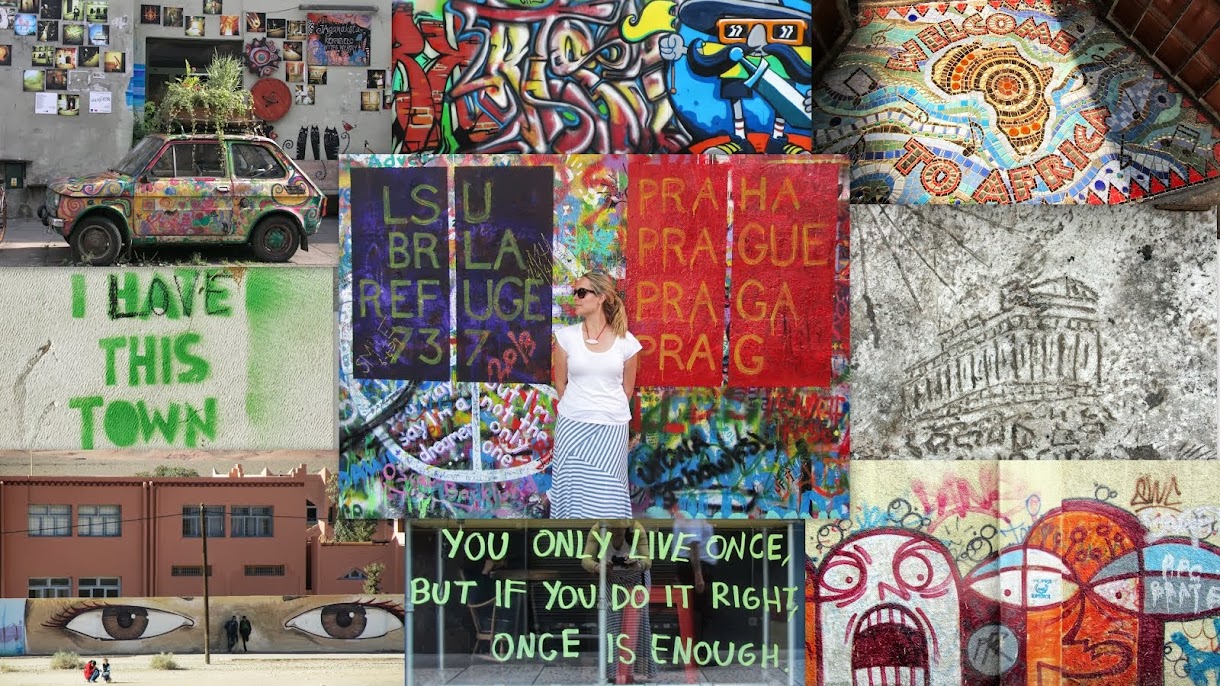As in their food, not the language. Because they know where it's at. Not with desserts though. They could use vast amounts of improvement in that arena.
First there's the Polish bagel. I doubt locals even know the name of it. I know I sure don't. But who needs to with vender stands on every street corner? The daily made bread rings are boiled instead of baked. It gives the bread a rather bland taste, but they fix that by seasoning it up with poppy or sesame seeds. Rumor has it, New Yorkers have Yiddish immigrants to thank for their morning breakfast staple. Good thing the original version doesn't have New York prices. 50 Euro cent boiled bagel? Yes please!
 |
| The unknown named Polish bagel thingie. |
Next up is the Jewish Quarter pizza-sandwich, ketchup, meats and/or vegetable, cheesy, bread-loaf masterpiece. They claim it's called a zapiekanki. Is that even a word? Ten points to anyone who can pronounce it. Five points to anyone who even takes the time to read the entire word without skimming it. Zapiekanki. I might come up with an uber delicious cheesy pizza-sandwich concoction myself and throw a few letters together, claiming it to be Polish. Something like, cortupanktzetzki. Bam. Golden.
Zapiekanki can be found at various vender windows of a circular building situated in the middle of the Jewish quarter market square. They're cheap. They're big. They're cheesy. They're extremely tasty. They're eaten by no less than 75 people strewn across the square at one time. And they're highly recommended. By me. If that's worth anything.
 |
| Zapiekanki in all its glory, modeled by a local |
Moving on. Why is it that weird culinary creations are called delicacies? Foie gras? French delicacy. Monkey brains? Chinese delicacy. Haggis? Scottish delicacy. Balut... (look it up)? Filipino, Vietnamese and Cambodian delicacy. Smalec? Polish delicacy.
 |
A not-too-happy-with-me man as I eyed his smalec.
I think he told me to get my own.
I couldn't understand him so I smiled and took his picture instead. |
I was completely fascinated with what I saw. A wooden stand in the middle of Krakow center square. Loaves of fresh, delicious looking bread. A giant pot stuffed to the brim with chunky bacon filled lard. A man cutting the loaves into large slices and slathering it with the fatty substance. And a long line of people impatiently waiting to fill their mouths with a large bite.
I wasn't going to try it. Eating fat, filled in fat, saved only by a piece of bread was a bit overboard. But the look of delight on the faces of those who enjoyed it got the better of me. I bought a slice of smalec. I ate a large portion. And I felt completely sick to my stomach after.
But my stomach was saved when I wandered into a small square holding the annual Summer pierogi festival.
The city sponsored event filled the air with karaoke styled, professional entertainment on a large stage overlooking the square.
The other three edges of the square were saved for wooden stands, each owned by a
separate restaurant in the city. They sold a handful of their own variation
of the classic Polish dish. Potato and cheese filled dumplings. Meat and
spinach filled dumplings. Blueberry filled dumplings. Chocolate and
strawberry filled dumplings.
Problem is, I never even made it a quarter of the way around the square before
I was a filled dumpling.
(cue the drums: da-dum. dum!)

































